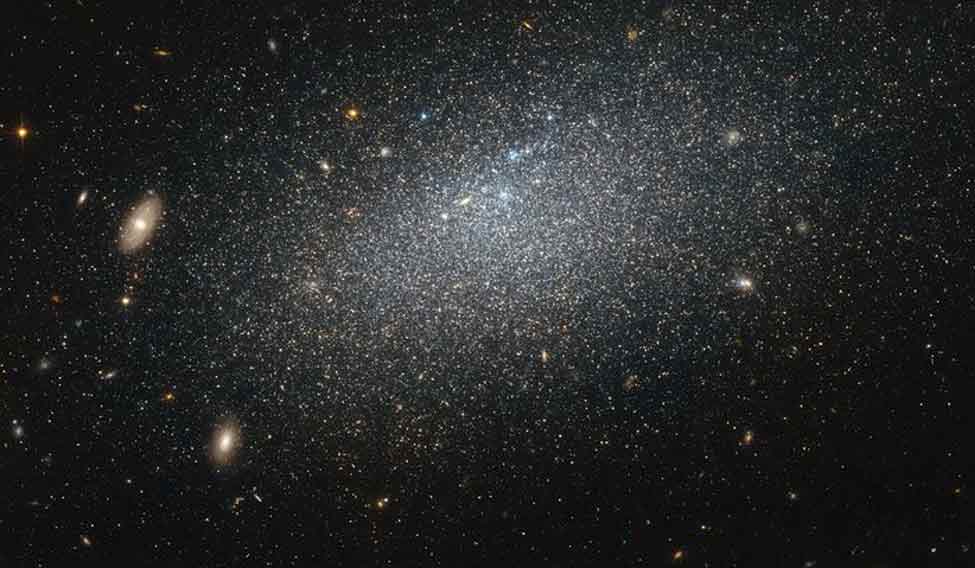The Hubble Space Telescope has spotted a mysterious, solitary dwarf galaxy—a type that is smaller and messier than its cosmic cousins and lacks the majestic swirl of a spiral or the coherence of an elliptical.
The galaxy UGC 4879 consists of a scattered drizzle of stars, and is very isolated. There are about 2.3 million light years between UGC 4879 and its closest neighbour, Leo A, which is about the same distance as that between the Andromeda Galaxy and the Milky Way.
The galaxy's isolation means that it has not interacted with any surrounding galaxies, making it an ideal laboratory for studying star formation uncomplicated by interactions with other galaxies.
Studies of UGC 4879 have showed a significant amount of star formation in the first four billion years after the Big Bang, followed by a strange nine-billion-year lull in star formation that ended one billion years ago by a more recent re-ignition.
The reason for this behaviour, however, remains mysterious, and the solitary galaxy continues to provide ample study material for astronomers looking to understand the complex mysteries of star birth throughout the universe.




